Life on Mars: NASA’s Ingenuity helicopter aces ninth fight
In its longest flight yet, the plucky helicopter buzzed around the Seitah region of Mars, snapping pictures of rock formations and other intriguing targets to help in NASA’s search for microbial life.
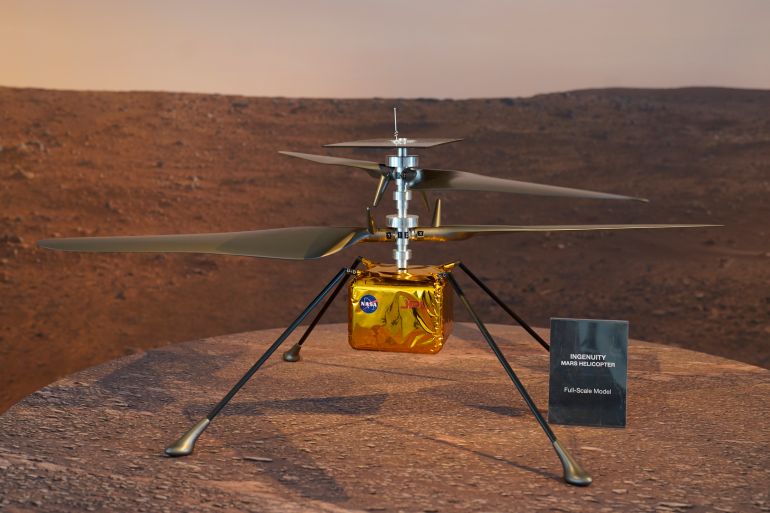
NASA’s Mars helicopter, Ingenuity, is proving to be quite the little explorer. The small rotorcraft just completed its ninth flight on the Red Planet, breaking speed and distance records along the way.
Although the United States space agency hasn’t shared all the details from the latest flight, the team has confirmed that the plucky little chopper has tackled what the agency says is its “most nerve-wracking” flight to date.
Keep reading
list of 4 itemsBezos taps aerospace pioneer Wally Funk for Blue Origin flight
Richard Branson calls his upcoming space flight ‘pinch-me moment’
Billionaire space race: Branson aims to make trip ahead of Bezos
The tiny helicopter was airborne for a record 166.4 seconds (2 minutes and 46.4 seconds), and flew at speeds of 5m (16 feet) per second, according to mission officials.
Ingenuity in action
Dubbed Ingenuity, the rotorcraft is on a technology demonstration mission, setting out to prove that such a craft could fly in the tenuous Martian atmosphere.
The chopper hitched a ride to Mars attached to the belly of the Perseverance rover, and ever since landing on the Red Planet on February 18, the craft has gone above and beyond scientists’ expectations.
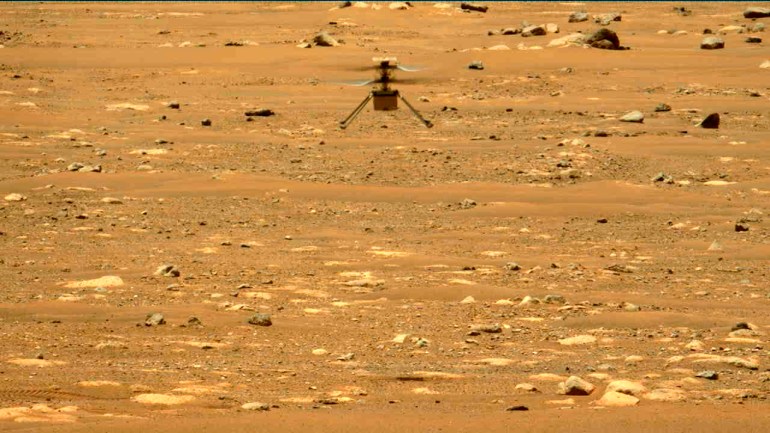
In its first few flights, the helicopter essentially flew up and down, hovering in place for a bit before it tried to traverse distances. The increasingly complex series of practice flights served as a demonstration of what off-world rotorcraft can do.
Now, as the craft approaches double digits in terms of flights, it’s upping the ante by adding in some new tricks.
For its latest expedition on July 5, Ingenuity flew over a patch of rough and interesting terrain in the Seitah region of Mars. This area is of particular interest because it’s characterised by sandy ripples that could prove treacherous for wheeled vehicles like the Perseverance rover.
The unfriendly terrain in this region was also a cause of concern for the helicopter because it would put Ingenuity’s navigation software to the test.
“It’s safe to say that this was the most nerve-wracking flight since flight one,” Havard Fjaer Grip, Ingenuity’s chief pilot at NASA’s Jet Propulsion Laboratory (JPL), told Al Jazeera.
#MarsHelicopter pushes its Red Planet limits. 🚁
The rotorcraft completed its 9th and most challenging flight yet, flying for 166.4 seconds at a speed of 5 m/s. Take a look at this shot of Ingenuity’s shadow captured with its navigation camera. https://t.co/TNCdXWcKWE pic.twitter.com/zUIbrr7Qw9— NASA JPL (@NASAJPL) July 5, 2021
That’s because Ingenuity’s software was made to work over flat surfaces, not the sandy, sloping hills of the Seitah region. Unexpected changes in the terrain could cause problems in finding the landing site because Ingenuity’s camera assumes the ground is flat.
The helicopter buzzed around the region, snapping pictures of rock formations and other intriguing targets to help in NASA’s search for microbial life. The little chopper flew its longest distance yet — 625m (2,051 feet), smashing the previous record of 160m (525 feet) set in June.
Interesting terrain
Perseverance touched down on Mars on February 18 with one major goal: to collect samples from Mars and scout for signs of life. To that end, officials at NASA selected its landing site, an ancient lake bed, as the best place to look for biosignatures on Mars.
It spent the first 100 sols (Martian days) checking out its systems and making sure that everything was in working order before jumping into the first science campaign, which focuses on studying the Seitah region.
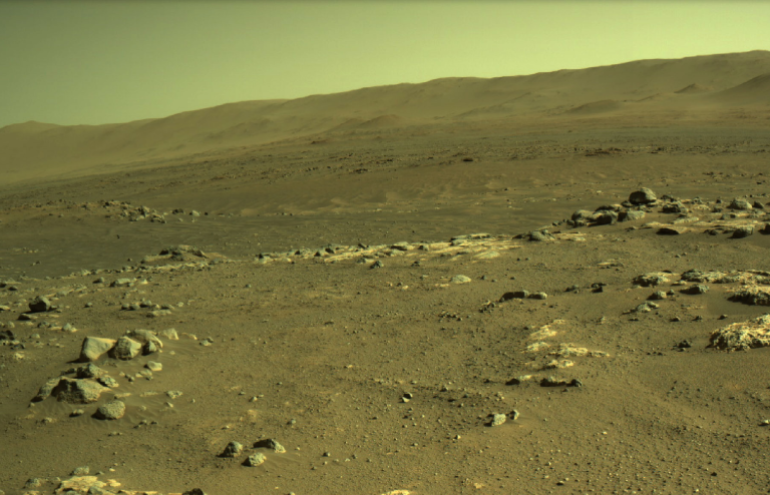
According to Vivian Sun, a systems engineer on the Perseverance team at JPL, the Seitah region (and surrounding areas) are home to at least four different types of rock that NASA would like to sample for a future mission to return to Earth.
Rock formations in this section of the crater floor are of particular interest to scientists because they could have developed from ancient lava flows or from sedimentation, which means there was once water there. And the presence of water has the potential for life.
However, some of the terrain there is especially treacherous to the rover, so Perseverance is going to have to rely on its aerial partner, Ingenuity, to do some reconnaissance.
“Ingenuity is a very exciting asset to have,” Sun told Al Jazeera. “We use some of the imagery from the helicopter to scout new locations.”
“It’s very helpful because we can use the imagery to help analyse the rock formations we think are interesting but cannot drive up to,” she added.
Ingenuity does not have a suite of scientific instruments like its counterpart, but it does have two different cameras — one colour and one black and white — that scientists on Earth can use to study and analyse rock formations.
For this ninth flight, Perseverance headed south, stopping at the first of the four interesting rock sites. With the help of Ingenuity, the team was able to land on tricky terrain, snap images of some cool rocks, and plan ahead to the next stop on its tour of the southern crater floor.
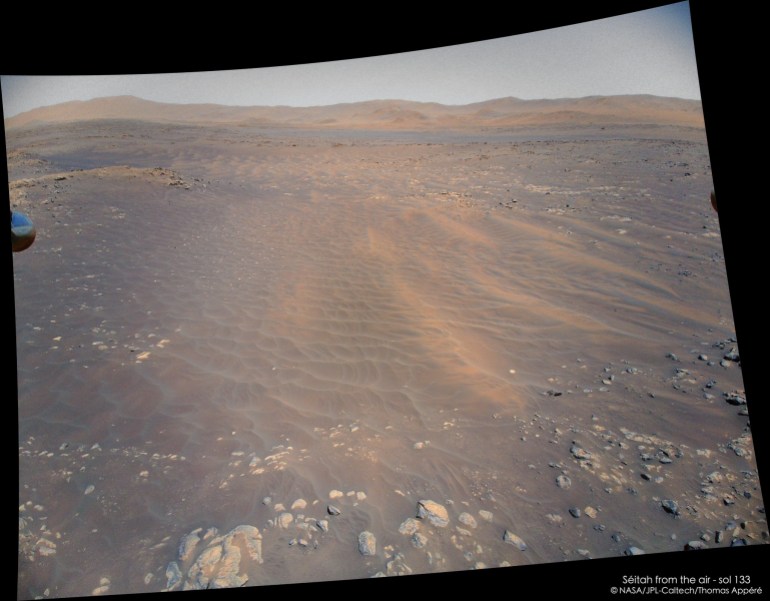
The next area of inquiry, dubbed CF-Fr (or crater fractured rock), is especially exciting as the rough rocks indicate that this area was once underwater.
“We don’t know what stories the rocks here will tell us, but we’re excited to find out,” Sun said.
The rover has also been testing out its built-in autopilot. Equipped with autonomous navigation software, the rover is able to drive itself instead of relying on commands from Earth.
It’s going to take Perseverance roughly 200 sols to study and explore the southern region of the Jezero Crater.
Because this area has at least four different types of rocks and evidence of ancient water, the team wants to start collecting its first Martian samples here. To do so, the team will bag up a few practice samples before going in for the real thing.
Once collected, the sample tubes will be stored somewhere on Mars where a future sample return mission will collect them.
A new era of exploration
By flying over the Seitah region, Ingenuity was able to complete a task in less than three minutes that would have taken months for Perseverance to accomplish.
And that innovation is at the heart of the Ingenuity mission, which is also about demonstrating that powered vehicles can fly on Mars.
That type of technology is invaluable to robotic missions and represents a new era of exploration.
NASA has a successful history of landing rovers on Mars, which started with the Mars Pathfinder mission in the 1990s.
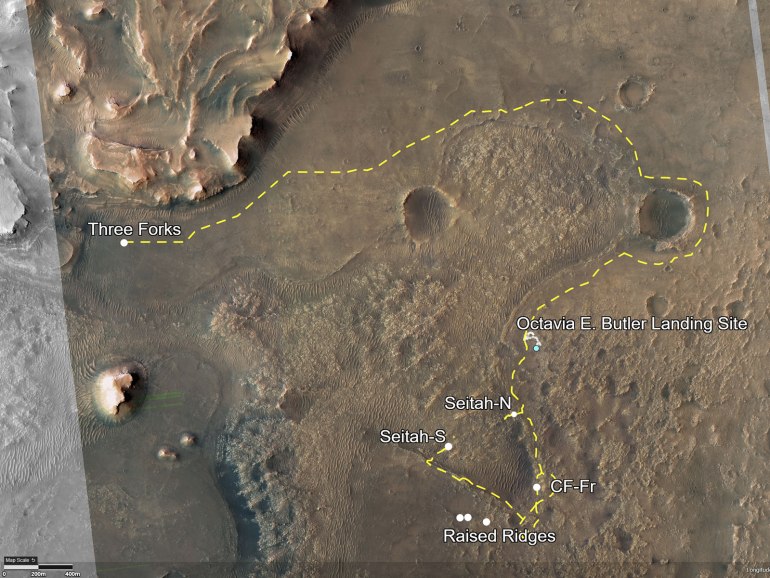
That mission, with its Sojourner rover, proved that wheeled vehicles could explore the Martian surface and act as our eyes and ears on the Red Planet. Humans have explored Mars for decades now with the help of these mobile scientists.
But Ingenuity is something new, proving that scientists can send aerial vehicles to help scout new and intriguing targets, as well as traverse places a rover could not.
“The plan going forward [for Ingenuity] is to really highlight the benefit of it working with the rover,” Jeff Delaune, a robotics technologist on the helicopter team at JPL, told Al Jazeera.
“Ingenuity has already completed its main mission,” he added. “We’re going to keep pushing its limits, and anything now is just the cherry on top of the mission.”
Perseverance and Ingenuity are never too far apart as the little chopper still needs the rover to communicate with Earth, but it’s helping guide Perseverance along the way.